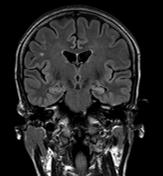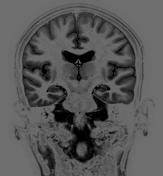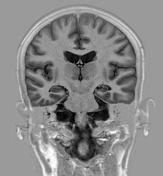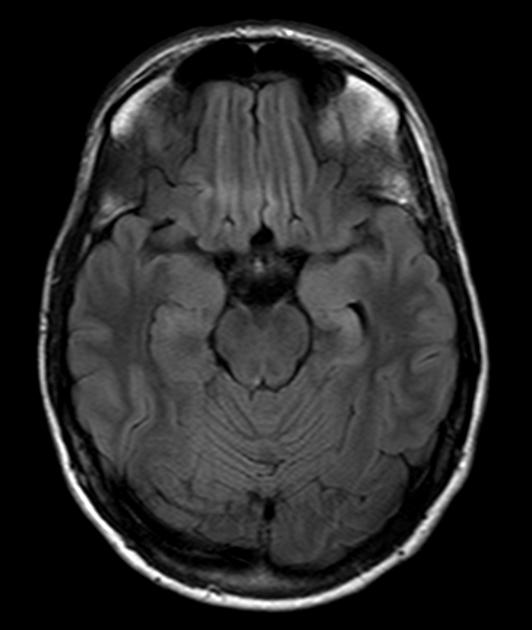Presentation
Seizures.
Patient Data
Age: Adult
From the case:
Mesial temporal sclerosis




Download
Info

Relative decreased size of the left hippocampal gyrus with high cortical FLAIR signal, suggestive of left mesial temporal sclerosis. Mild dilatation of temporal horn of left lateral ventricle.
Case Discussion
Mesial temporal sclerosis is the most common association with intractable temporal lobe epilepsy. It is often unilateral, seen as atrophy of the hippocampus and increased FLAIR signal.




 Unable to process the form. Check for errors and try again.
Unable to process the form. Check for errors and try again.